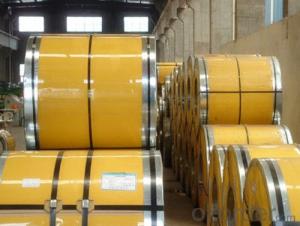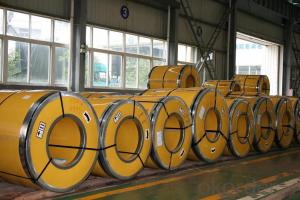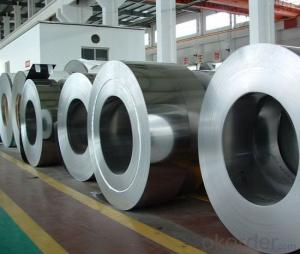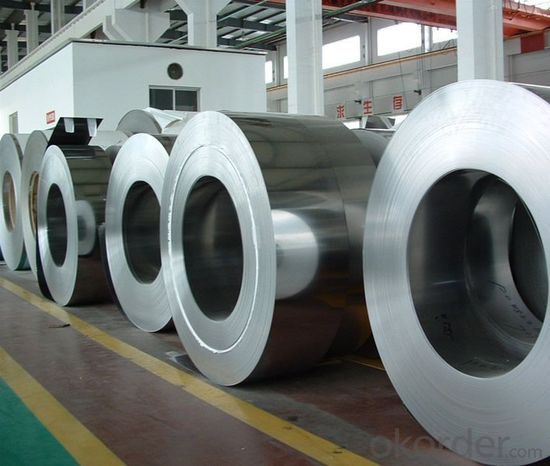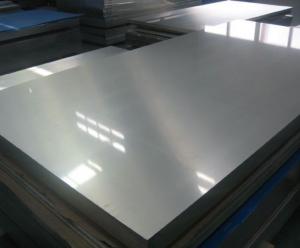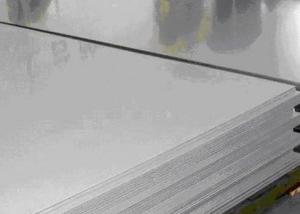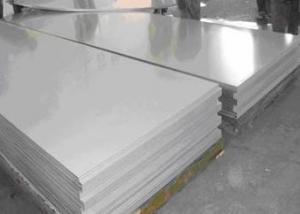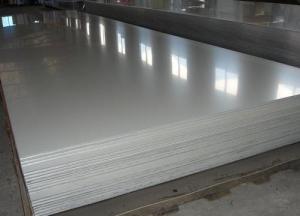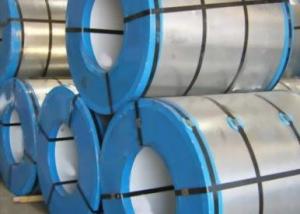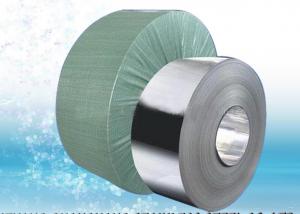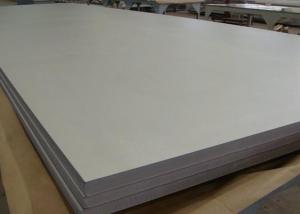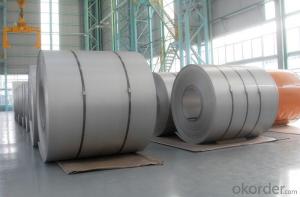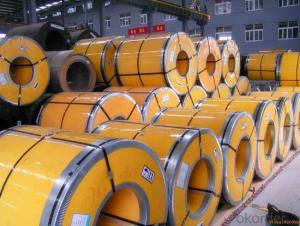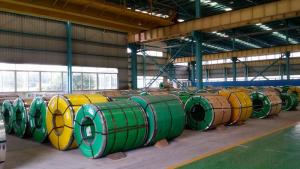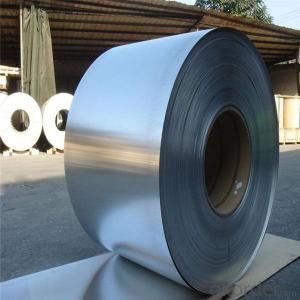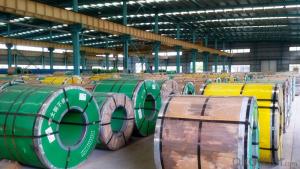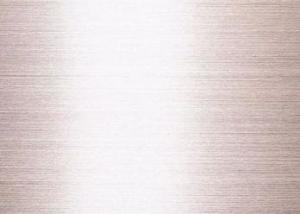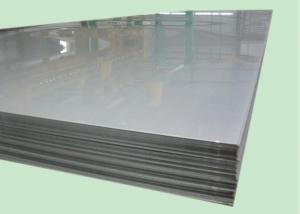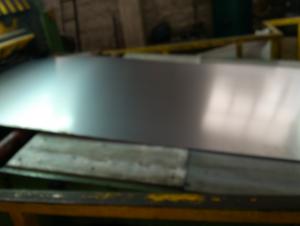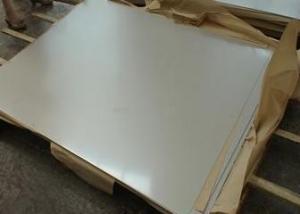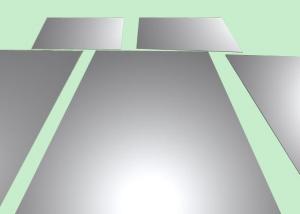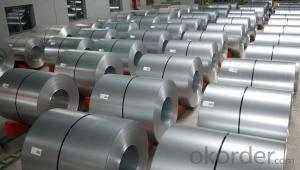Hot Rolled Stailess Steel Coils 400 Serious
- Loading Port:
- Shanghai
- Payment Terms:
- TT OR LC
- Min Order Qty:
- 25 m.t.
- Supply Capability:
- 100000 m.t./month
OKorder Service Pledge
OKorder Financial Service
You Might Also Like
Hot Rolled Stailess Steel Coils 400 Serious
1.Structure of Hot Rolled Stailess Steel Coils 400 Serious
Hot Rolled Stailess Steel Coils 400 Serious is one of the raw material of the cold rolled stainless steel strip, which can be used directly in many places. Stainless Steel (Stainless Steel) is short for acid-proof Stainless Steel, resistant to weak corrosive medium such as air, steam, water, or with a Stainless Steel grade.
2.Main Features of Hot Rolled Stailess Steel Coils 400 Serious
1) weldability: The purpose of the different requirement for welding performance are different.1 Kind of tableware generally do not require the performance of welding, even including some pot class enterprise. But the vast majority of products all need raw materials welding performance is good, like the 2 kinds of tableware, thermos flask, steel pipes, water heaters, water dispensers, etc.
2) Corrosion resistance The vast majority of stainless steel products for corrosion resistant performance is good, like a, 2 kinds of tableware, kitchen utensils and appliances, water heaters, water dispensers, etc., some foreign businessmen on corrosion resistance of products also do experiment: in NACL aqueous solution heated to boiling, after a period of time the best solution, wash and drying, weight loss, to determine the degree of corrosion (note: the product polishing, because of the sand cloth or sandpaper containing Fe, will cause the test surface rust spots)
3) Polishing performance In today's society stainless steel products in production after polishing the process commonly, when only a small number of products such as water heaters, water dispenser tank don't need polishing. So this will require materials polishing performance is very good. The factors influencing polishing performance mainly include the following: 1) raw material surface defects. Such as scratch, pitting, pickling, etc. (2) raw material problem. Hardness is too low, easy when polishing cast light (BQ), and the hardness is too low, the surface easily when deep drawing appear orange peel phenomenon, which affects the BQ. Relatively high hardness of BQ sex is good. (3) after deep drawing products, great deformation area surface will be a small black spots and RIDGING, thus affecting the BQ.
4) Heat resistant performance Heat resistant performance refers to the high temperature stainless steel can still maintain its excellent physical and mechanical properties. Carbon: the influence of carbon in austenitic stainless steel is formed strong and steady. Set the austenitic austenitic area and expand elements. Carbon formation of austenite is about 30 times that of the nickel, the ability of carbon is a kind of gap elements, through the solid solution strengthening can significantly increase the strength of the austenitic stainless steel. Carbon austenitic stainless steel can be improved in high concentration chloride (e.g., 42% MgCl2 boiling solution) in the performance of the resistance to stress corrosion. But, in the austenitic stainless steel, carbon is often seen as the harmful elements, this is mainly due to the corrosion of stainless steel used in some conditions, such as welding or heating by 450 ~ 850 ℃), carbon steel with chromium in forming high chromium Cr23C6 type carbon compounds which can lead to local chromium depletion, make steel corrosion resistance especially resistant to intergranular corrosion performance degradation. So. Since the 60 s of the development of new cr-ni austenitic stainless steel is mostly carbon content less than 0.03% or 0.02% of the ultra-low carbon type
5) Corrosion resistance When the atomic number of no less than 12.5% chromium content in steel, can make the steel electrode potential mutations, the negative potential to the positive electrode potential. To prevent electrochemical corrosion.
3. Hot Rolled Stailess Steel Coils 400 Serious Images
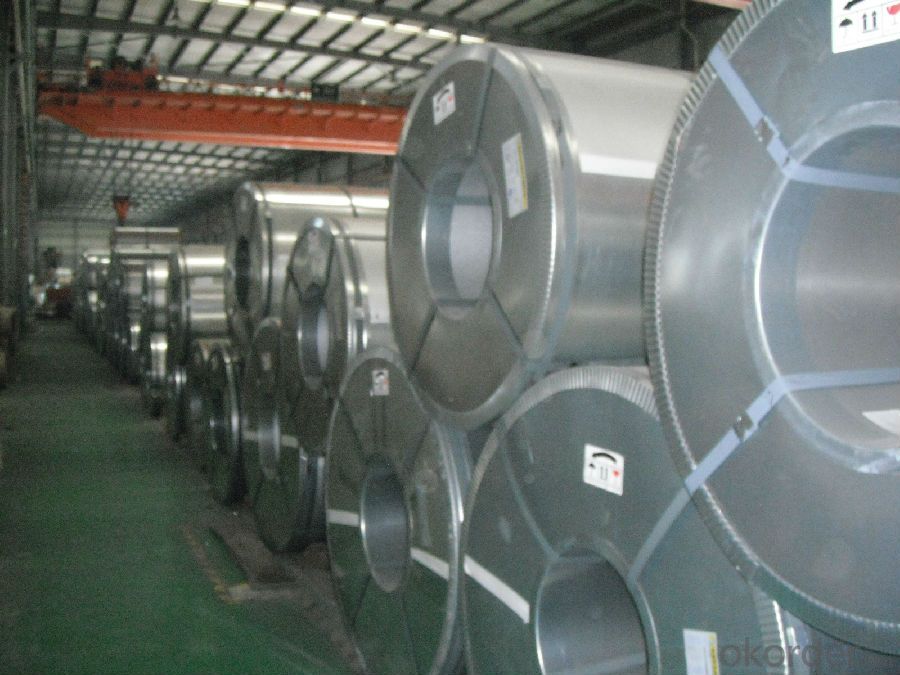
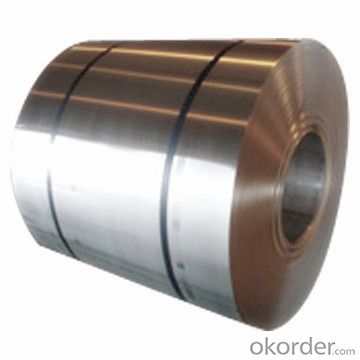
4. Hot Rolled Stailess Steel Coils 400 Serious Specification
The word "stainless steel" is not merely refers to a pure stainless steel, but said more than one hundred kinds of stainless steel industry, the development of each stainless steel has good performance in their specific applications. The key to the success of the first is to make clear purpose, and then determine the correct material. Related to architectural construction applications usually only six types of steel. They contain 17 ~ 22% chromium, good steel contains nickel. Add molybdenum can further improve the atmospheric corrosion resistance, especially containing chloride atmospheric corrosion resistance. Stainless steel often according to the state of organization can be divided into: martensite steel, ferritic steel, austenitic steel, austenitic (two-phase) - ferrite stainless steel and precipitation hardening stainless steel, etc. In addition, according to ingredients can be divided into: chromium stainless steel, chromium nickel stainless steel and chromium manganese nitrogen stainless steel, etc.
1) Ferritic stainless steel Chromium containing 15% ~ 30%. Its corrosion resistance, toughness and weldability with chromium content increases with the increase of chloride stress corrosion resistance is superior to other types of stainless steel, fall into this category of Crl7, Cr17Mo2Ti, Cr25, Cr25Mo3Ti, Cr28, etc. Ferritic stainless steel because of the high chromium content, corrosion resistance and oxidation resistance are relatively good, but the mechanical properties and process performance is poorer, more used to stress less acid structure and steel used as antioxidant. This kind of steel to withstand atmosphere, nitric acid and corrosion of the brine solution, and has good high temperature oxidation resistance, low thermal expansion coefficient, etc, used in nitric acid and food factory equipment, also can make work under high temperature parts, such as gas turbine parts, etc.
2) Austenitic stainless steel The title Chromium is more than 18%, still contain about 8% of the nickel and small amounts of molybdenum, titanium, nitrogen and other elements. Good comprehensive performance, corrosion resistant to a variety of media. Number of austenitic stainless steel is commonly used one cr18ni9, 0 cr19ni9, etc. In the Wc < 0.08% 0 cr19ni9 steel, steel grade is marked as "0". This class contains large amounts of Ni and Cr in steel, make steel in austenitic state at room temperature. This kind of steel has good plasticity and toughness, weldability and corrosion resistance and non-magnetic or weak magnetic, the corrosion resistance in oxidizing and reducing medium are good, used to make acid equipment, such as corrosion resistant containers and equipment lining, pipelines, nitric acid resistant equipment parts, etc., also can be used as the main body of watches and clocks jewelry stainless steel material. Austenitic stainless steel with solid solution treatment, the steel heating to 1050 ~ 1150 ℃, then water-cooled or air-cooled, for single-phase austenitic organization.
3) Austenitic, ferritic duplex stainless steel The advantages of both austenitic and ferritic stainless steel, and has the superplasticity. Austenite and ferrite The title Each accounts for about half of the stainless steel. In the case of contain low C, Cr content was 18% ~ 18%, Ni content at 3% ~ 3%. Some steel containing Mo, Cu, Si, Nb, Ti, N and other alloying elements. This kind of steel both austenite and ferrite stainless steel, the characteristics of compared with ferrite, plasticity and toughness is higher, no room temperature brittleness, intergranular corrosion resistance and welding performance were significantly increased, while maintaining a ferritic stainless steel of 475 ℃ brittleness and high thermal conductivity, has the characteristics of superplasticity. Compared with austenitic stainless steel, high strength and resistance to intergranular corrosion and resistance to chloride stress corrosion is improved obviously. Duplex stainless steel has excellent resistance to pitting corrosion performance, is also a kind of nickel and stainless steel.
4) Precipitation hardening stainless steel For austenitic or martensite structure matrix, and the number of precipitation hardening stainless steel commonly used such as 04 cr13ni8mo2al. It can pass the precipitation hardening (also known as the age hardening) dealing with the hard (strong) of stainless steel.
5) Precipitation hardening stainless steel For austenitic or martensite structure matrix, and the number of precipitation hardening stainless steel commonly used such as 04 cr13ni8mo2al. It can pass the precipitation hardening (also known as the age hardening) dealing with the hard (strong) of stainless steel.
5.FAQ of Hot Rolled Stailess Steel Coils 400 Serious
We have organized several common questions for our clients,may help you sincerely:
①How about your company?
A world class manufacturer & supplier of castings forging in carbon steel and alloy steel,is one of the large-scale professional investment casting production bases in China,consisting of both casting foundry forging and machining factory. Annually more than 8000 tons Precision casting and forging parts are exported to markets in Europe,
②How to guarantee the quality of the products?
We have established the international advanced quality management system,every link from raw material to final product we have strict quality test;We resolutely put an end to unqualified products flowing into the market. At the same time, we will provide necessary follow-up service assurance.
③How to get the best quotation?
You can send us your detail inquiry including the specification and quantity.
.
- Q: What is the machinability of stainless steel strips?
- The machinability of stainless steel strips can vary depending on the specific grade and composition of the stainless steel. However, in general, stainless steel strips tend to have lower machinability compared to other materials like carbon steel or aluminum. This is primarily due to the presence of chromium, which forms a protective oxide layer on the surface of stainless steel, making it harder to cut and shape. Additionally, stainless steel strips can have a tendency to work harden during machining, requiring special cutting tools and techniques to achieve desired results.
- Q: What are the different types of surface finishes for stainless steel strips?
- There are several different types of surface finishes that are commonly used for stainless steel strips. These finishes are applied to the surface of the stainless steel in order to improve its appearance, increase its corrosion resistance, and enhance its durability. 1. Mill Finish: This is the most basic type of surface finish, which is achieved by leaving the stainless steel strip in its original, as-produced state. It has a dull, non-reflective appearance and may have visible imperfections or marks from the manufacturing process. 2. No. 1 Finish: Also known as hot-rolled annealed and pickled (HRAP), this finish is achieved by annealing the stainless steel strip and then pickling it in acid. It has a smooth, reflective surface with a slightly matte appearance. No. 1 finish is commonly used in industrial applications where surface appearance is not a primary concern. 3. No. 2B Finish: This finish is achieved by cold-rolling the stainless steel strip and then annealing and pickling it. It has a smooth, reflective surface with a bright, semi-reflective appearance. No. 2B finish is commonly used in applications that require a good balance between appearance and corrosion resistance, such as kitchen appliances and architectural elements. 4. No. 4 Finish: Also known as brushed or satin finish, this finish is achieved by mechanically polishing the stainless steel strip with abrasive materials. It has a smooth, matte appearance with fine parallel lines, giving it a brushed texture. No. 4 finish is commonly used in decorative applications, such as furniture, elevator panels, and decorative trims. 5. No. 8 Finish: Also known as mirror finish, this finish is achieved by polishing the stainless steel strip to a highly reflective surface. It has a mirror-like appearance with excellent reflectivity. No. 8 finish is commonly used in architectural and decorative applications that require a high-end, polished look, such as signage, jewelry, and automotive trims. In addition to these main surface finishes, there are also other specialized finishes available for specific applications, such as embossed finishes, patterned finishes, and colored finishes. These finishes further enhance the aesthetic appeal and functionality of stainless steel strips in various industries.
- Q: Can stainless steel strips be used in the food processing equipment industry?
- Yes, stainless steel strips can be used in the food processing equipment industry. Stainless steel is a popular material choice in the food processing industry due to its many beneficial properties. It is corrosion-resistant, which is essential in an environment where food and liquids are present. Stainless steel is also hygienic and easy to clean, making it suitable for equipment that comes into contact with food. Additionally, stainless steel has high strength and durability, ensuring that the equipment can withstand the rigorous demands of the food processing industry. Therefore, stainless steel strips are commonly used in the manufacturing of food processing equipment such as conveyors, mixers, slicing machines, and food storage containers.
- Q: Can stainless steel strips be used in the production of marine propellers?
- Yes, stainless steel strips can be used in the production of marine propellers. Stainless steel is a popular choice for marine applications due to its excellent corrosion resistance and durability in harsh environments. Marine propellers are exposed to saltwater, which can cause corrosion and degradation over time. By using stainless steel strips, the propellers can withstand the corrosive effects of saltwater, ensuring a longer lifespan and better performance. Additionally, stainless steel offers high strength and resistance to fatigue, making it an ideal material for propeller blades that need to withstand the forces and vibrations of marine propulsion. Overall, stainless steel strips are a suitable choice for the production of marine propellers due to their corrosion resistance, durability, and strength.
- Q: How do stainless steel strips compare to other metals in terms of cost?
- Compared to other metals, stainless steel strips tend to be more expensive due to their unique properties and superior resistance to corrosion. Despite their higher initial cost, stainless steel strips prove to be cost-effective in the long run as they require minimal maintenance and exhibit excellent durability. In contrast, alternative metals like carbon steel or aluminum may have lower upfront expenses, but they are more susceptible to corrosion and wear, resulting in additional costs for repairs or replacements. Furthermore, stainless steel strips have a high scrap value, making them a more economically sound choice for recycling and sustainability purposes. In conclusion, although stainless steel strips may have a higher initial price, their long-term benefits and advantages make them a worthy investment.
- Q: What are the common uses of stainless steel strips in the aerospace structural components?
- Due to their unique properties and advantages, stainless steel strips have various applications in aerospace structural components. These include: 1. Providing structural support: Aircraft frame structures often utilize stainless steel strips to ensure strength and stability. They are commonly found in wing spars, fuselage frames, and other load-bearing components. 2. Manufacturing fasteners and connectors: Stainless steel strips are well-suited for aerospace applications where fasteners and connectors are needed. Their high tensile strength, resistance to corrosion, and ability to withstand extreme temperatures make them ideal for securing and joining different structural elements. 3. Constructing exhaust systems: Stainless steel strips are an excellent choice for constructing exhaust systems in aerospace engines. They can withstand the high temperatures and corrosive gases generated by the engines, ensuring the longevity and reliability of the system. 4. Fabricating fuel and hydraulic lines: Stainless steel strips are frequently used in the fabrication of fuel and hydraulic lines within aircraft. Their corrosion resistance and ability to handle high pressures make them reliable for transporting essential fluids throughout the aircraft. 5. Creating heat shields: In aerospace applications, stainless steel strips are utilized in the construction of heat shields. These shields protect sensitive components from the high temperatures generated by engines, enabling proper functionality and extending their lifespan. 6. Manufacturing interior components: Stainless steel strips are also employed in the manufacturing of various interior components such as cabin fittings, seat structures, and galley equipment. Their aesthetic appeal, durability, and resistance to wear and tear enhance the overall passenger experience and ensure safety. In conclusion, stainless steel strips are widely utilized in aerospace structural components due to their strength, corrosion resistance, ability to withstand high temperatures, and reliability. Their versatility and performance make them an essential material in the aerospace industry.
- Q: What are the different types of surface textures for stainless steel strips?
- There are several different types of surface textures for stainless steel strips, including brushed, polished, matte, satin, embossed, and patterned finishes.
- Q: Can stainless steel strips be used for cladding purposes?
- Indeed, cladding purposes can make use of stainless steel strips. Renowned for their durability, resistance to corrosion, and aesthetic charm, stainless steel is a favored option for cladding applications. On numerous surfaces like walls, columns, and facades, stainless steel strips can be effortlessly installed to furnish both a safeguarding and decorative overlay. Be it commercial, industrial, or residential projects, stainless steel strips provide a flexible and enduring resolution for cladding purposes.
- Q: How are stainless steel strips different from carbon steel strips?
- Stainless steel strips and carbon steel strips have various dissimilarities that make them suitable for different purposes. The primary contrast lies in their composition and the inclusion of supplementary elements. Concerning composition, stainless steel strips are mainly comprised of iron and chromium, with the incorporation of nickel, molybdenum, and manganese. This composition grants stainless steel its corrosion-resistant qualities, making it ideal for applications involving exposure to moisture or chemicals. Moreover, stainless steel strips possess exceptional heat resistance, making them appropriate for high-temperature environments. In contrast, carbon steel strips consist mainly of iron and carbon, with minimal amounts of other elements. Carbon steel is renowned for its strength and durability, rendering it suitable for applications that necessitate high tensile strength and hardness. However, carbon steel is vulnerable to corrosion, particularly when exposed to moisture or specific chemicals. Another significant distinction between stainless steel and carbon steel strips lies in their appearance. Stainless steel exhibits a distinctive silver-gray color and a smooth, shiny surface, which enhances its aesthetic appeal. Conversely, carbon steel typically has a more muted appearance, with a rougher surface texture due to impurities. Additionally, the cost of stainless steel strips surpasses that of carbon steel strips due to the additional elements used in their composition, as well as their superior corrosion resistance and other properties. This cost differential is a crucial factor to consider when selecting between the two materials for a particular application. In conclusion, stainless steel strips and carbon steel strips vary in terms of composition, corrosion resistance, heat resistance, appearance, and cost. Understanding these disparities is imperative in choosing the appropriate material for a specific application, ensuring optimal performance and longevity.
- Q: Can 111 stainless steel strips be used in the pulp and paper industry?
- In the pulp and paper industry, the utilization of 111 stainless steel strips is feasible. This industry extensively employs stainless steel due to its ability to resist corrosion, its robustness, and its durability. It serves various purposes, including the production of paper machines, screens, and other equipment that are exposed to corrosive chemicals and liquids utilized in the pulp and paper manufacturing process. The 111 grade stainless steel, known as AISI 111 or S11100, is a low carbon variant that demonstrates desirable weldability and resistance to intergranular corrosion. Hence, it presents itself as a suitable material choice for specific requirements in the pulp and paper industry. Nevertheless, it is vital to assess the application and conditions meticulously to ensure that the stainless steel strips satisfy the necessary mechanical and chemical properties for optimal performance.
Send your message to us
Hot Rolled Stailess Steel Coils 400 Serious
- Loading Port:
- Shanghai
- Payment Terms:
- TT OR LC
- Min Order Qty:
- 25 m.t.
- Supply Capability:
- 100000 m.t./month
OKorder Service Pledge
OKorder Financial Service
Similar products
Hot products
Hot Searches
Related keywords
